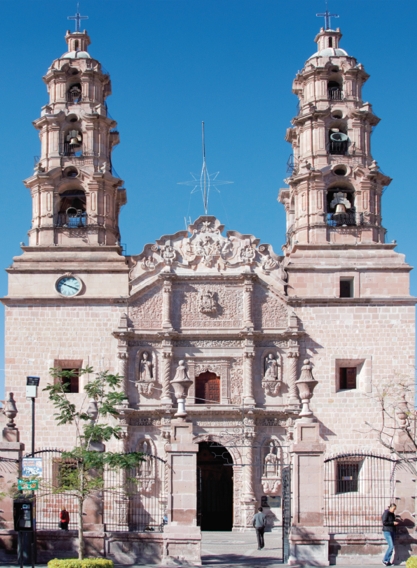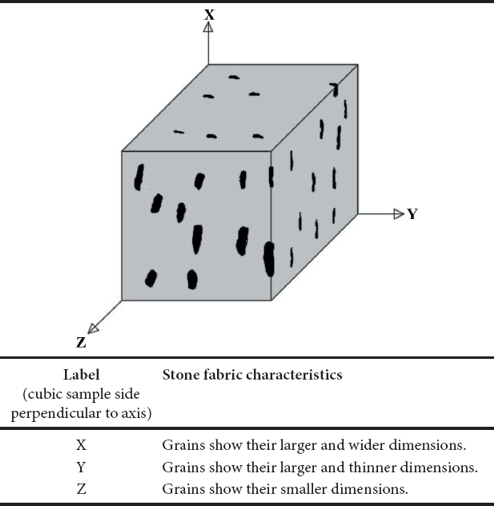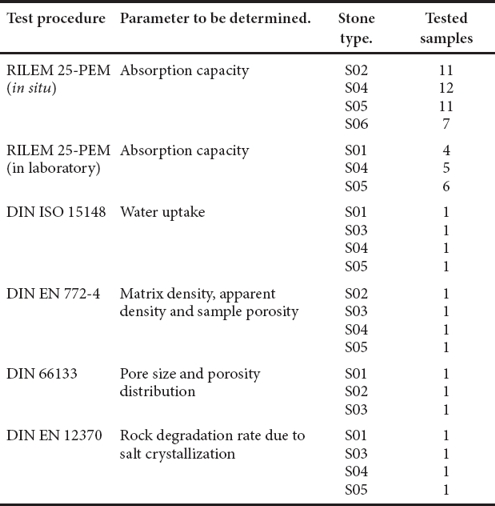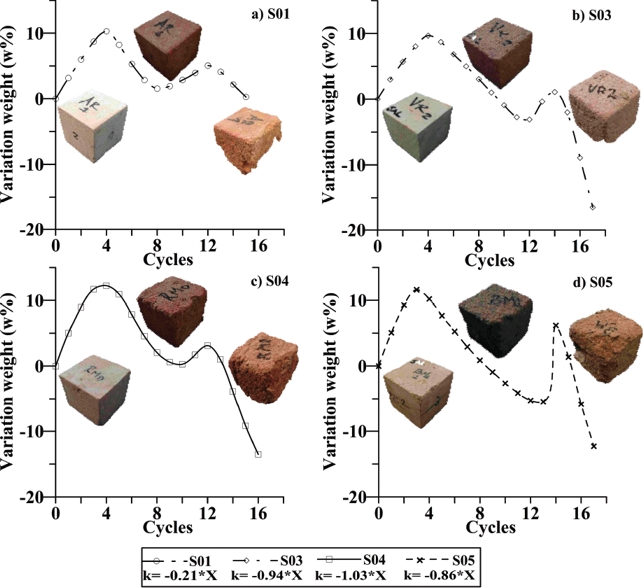Introduction
Natural rocks are the most used material in heritage constructions in central Mexico. Their use in the building has started since more than 5,000 years ago (Cassar, 2002). Rocks have been used as material to elaborate masonry for structural elements in heritage constructions. Commonly, rock mining took place close to the constructions due to the scarce technology, then available both for rock extraction and its carrying to the place in which these rocks were used as material for masonry. As a consequence, rocks with low mechanical properties to resist weather agents were used in the majority of massive masonry constructions (Snethlage, 2014).
Heritage buildings experience deterioration along time due to both natural and anthropogenic effects (i.e. fire, wars effects, lack of maintenance, rain, wind, seismic effects, etc.). Since the weather effects are unavoidable and recurrent along the life of the buildings, masonry weathering is perhaps the most frequent damage in heritage buildings (Feilden, 2003, Siegesmund et al., 2002). Other recurrent effect in many historic masonry buildings is the rising moisture effect, which is the increase of dampness in the base of walls, due to water from subsoil moving upwards by capillarity through the masonry (Guimarães et al., 2016, Franzoni et al., 2014; Rirsch and Zhang, 2010; Feilden, 2003).
The intensity of weather and rising moisture effects on the masonry depends on the mechanical properties of stones and mortar. It depends on such way that the permanence on time of some historic buildings is related to the high quality of stones and mortar of the masonry used for their construction. Therefore, deterioration evaluation of stones of historical constructions has an important role in the preservation of heritage buildings (Siegesmund et al., 2002).
Research on deterioration and preservation of masonry began at XIX Century. One of the research lines that recently have gained interest is the research on the changes in mechanical properties of stone along time, because it supplies information about the durability of stone masonry (Ahmad, 2012).
Determination of the stone masonry deterioration involves a detailed survey of stone characteristics and a study to determine the detrimental effects to which historic constructions have been exposed along their history. The interaction between mechanical and chemical stone properties with the different damaging agents becomes a complex system. Consequently, complete information on the deterioration condition of masonry stone depends on several parameters and factors related each other. Hence, a comprehensive analysis is needed to get with more realistic information on the stone deterioration level (Nicholson, 2001).
Several types of stones have been used to elaborate masonry of historic buildings. Nevertheless, in Central México the great availability of volcanic rocks favors its use in massive constructions of stone masonry. Among the volcanic rocks used for historical constructions, poorly welded tuffs have been the most used due to its low volumetric weight and by the ease to be cut, carve and worked (Fitzner and Basten, 1994).
Unfortunately, the low volumetric weight of tuffs is related to high porosity. Hence, tuffs commonly present low mechanical properties (i.e. low tensional strenght from 1 to 4 Mpa and compressional strenght from 10 to 45 Mpa, according to Siegesmund and Snethlage (2014), Kılıç and Teymen (2008); Rahn (1996)), and hydraulic properties that favor moisture by capillarity of soil and atmospheric water. Specifically Barranca, Valladolid and San Miguel el Alto tuff report compressional strenght average values up to 28.5 Mpa (Wedeking et al., 2013; Sánchez-Gonzalez and Maldonado-Lee, 2008).
Historical buildings in Aguascalientes were built between the centuries 16 to 20. They were built of masonry composed by volcanic rocks mainly tuff. As a consequence, several buildings present damages and deterioration of the masonry stones, mainly at the base of walls due moisture, which favor salt crystallization. In turn, salt crystallization has favored developing of stone decay in the cathedral stones such as flaking and scaling, black crusts (Figure 1).
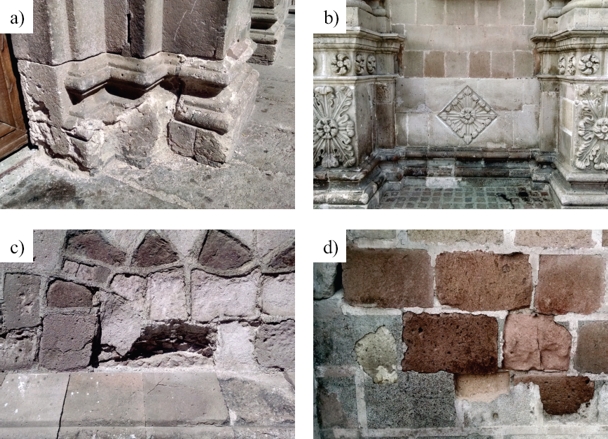
Figure 1 Deterioration of the Aguascalientes City Cathedral due to weathering and moisture. a) Black crusts, soiling, scratch, moist areas and raising damp on a wall at a right side of the main access to the temple, b) black crusts and contamination by human waste, soiling y rising damp in the bottom of the wall at the right side of the access door. c) and d) rising damp and flaking on rocks on the northern wall.
A petrographycal characterization of rocks forming the masonry walls of the Cathedral of Aguascalientes City was developed (Figure 2). Both, in situ and lab tests were carried out to determine the susceptibility to deterioration of the masonry stones due to the rising moisture effects. The aims of the study were to identify the most susceptible stone type for deterioration, and figure out the current deterioration degree of the stones in several walls spots outside the studied building.
Materials and methods
Due the Cathedral of Aguascalientes is considered as a historical and protected monument, the sampling of the original building rocks is restricted to just few and little pieces, that were taken from the replaced material in different former restoring works. The sample identified as S01 belongs to Barranca tuff, samples S02, S04 and S05 are from the group of Valladolid tuff; as well as sample S03, used in current restorations, was obtained from a stonecutter of San Miguel el Alto and finally sample S06 was only analyzed in situ. Three main types of rocks were used in the studied building (Barranca, Valladolid and San Miguel el Alto tuff). The original used rock was older than hundred years, pinkish volcanic tuff rocks, extracted of the region of Barranca, near to Aguascalientes City (sample S01, Table 1). For restoration works, made 50 years ago, another similar rock was used, and it comes from the locality of Valladolid, in the vicinity of Aguascalientes (Valladolid tuff, samples S02, S04 and S05, Table 1). Finally, in 2014, a restoration work was carried out in the north tower of the Cathedral using a very commercial replacement rock (San Miguel el Alto tuff, sample S03), which has been widely used in Mexico in recent years. This rock comes from the surroundings of San Miguel El Alto in the state of Jalisco (sample S03, Table 1). The volcanic tuff of San Miguel El Alto have been already described in the literature (Wedekind et al., 2011, 2013). Some macroscopic characteristics of the building rocks of the Cathedral of Aguascalientes as color, size and shape of the clasts, as well as the type of matrix are shown in Table 1.
Table 1 Lithological characteristics of identified stones in the masonry of the Cathedral of Aguascalientes City. *Stone S03 is a “fresh” material used to replace the most deteriorated stones in the restoration works along the last 30 years.
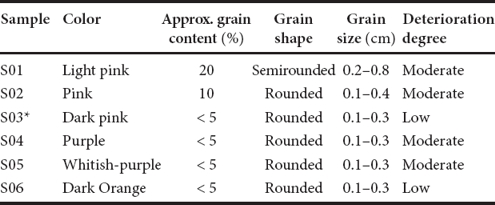
An in situ macroscopic petrographic characterization of the stones exposed on the outside walls of the studied building was carried out. Data of color, grain and matrix characteristics and level of deterioration and decay were registered in 48 surveyed spots on the Cathedral walls (Table 1).
Karsten tube, water uptake, pore radii distribution and salt crystallization laboratory tests were applied to stone cubic samples (6.5× 6.5× 6.5 cm) extracted from the masonry of the studied building. The tests were as follow:
Petrography of the collected samples
During the study of the Cathedral of Aguascalientes there were taken samples from the original rocks (Valladolid and Barranca tuff) and from the replacements (San Miguel el Alto tuff) used during the restorations for a macroscopic description and a petrographic analysis under the microscope. All the studied rocks show a similar appearance, but petrographically they show some important variations.
Macroscopically, the three types of rock used showed a very similar appearance, standing out a color that varies from pink to pink-purple.
The Barranca tuff shows a very homogeneous pale pink color in the fresh state and a very fine matrix (60-70 %), composed of small crystals and glass (mainly), not recognizable even with the aid of the magnifying glass. Within this matrix, elongated and tabular feldspar microcrystals, as well small (> 0.3 mm), rounded and vitreous quartz crystals are embedded. The texture is clearly matrix supported. Some 0.5 mm to 1 mm well collapsed fiammes of pumice are occasionally present in the Barranca tuff sample (Figure 3a).
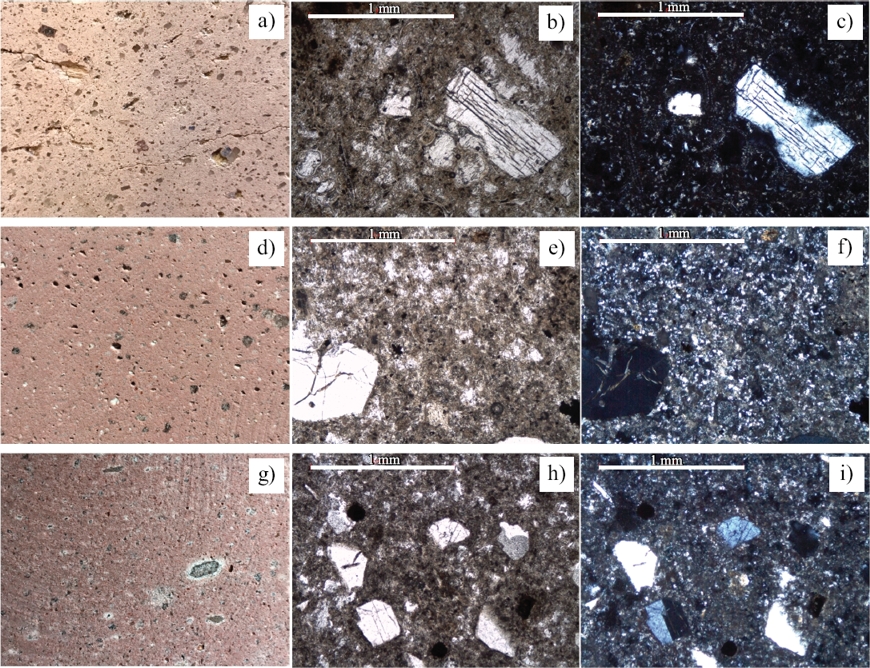
Figure 3 Comparison between the original build rock of Barranca (a, b and c) and the replacement rocks of Valladolid (d, e and f) and San Miguel El Alto (g, h and i). The differences in texture and mineral composition are clear to recognize (explanation in text). a, d and g: Macroscopically aspect of the samples in hand specimen. Length of the samples 5 mm. b, e and h: Microphotographs of the studied tuff rocks in thin section with parallel nicols. Length of the photography 2 mm. c, f and i: Microphotographs of the studied tuff rocks in thin section with crossed nicols. Length of the photography 2 mm.
The replaced tuff stone of Valladolid presents a pink color in fresh state, and to the naked eye it looks darker than the Barranca tuff. This volcanic rock is also very fine grained and its crystals are not identifiable at a glance. With the help of the magnifying glass, quartz microcrystals are recognized mainly in rounded and vitreous forms, as well as small very altered white microcrystals of feldspars. The Valladolid tuff differs from the Barranca tuff by the lack of collapsed fiammes (Figure 3d).
Wedekind et al (2013) described the tuff of San Miguel El Alto as a pinkish to reddish rhyolite- dacite tuff (rhyodacite), which is an attractive building stone because of the fine and homogenous groundmass contrasting with the presence of centimeter to decimeter-sized, more or less altered pumice clasts (Figure 3g).
The original building rock (Barranca tuff, sample S01, Figure 3a) is a light pinkish volcanic tuff rock, with a crystalline to glassy matrix (50-60%) where are embedded 0.5-1.0 mm coarse idiomorphic quartz crystals (10-15%) an elongate to oblate, altered 0.5 mm coarse feldspar crystals (10%). The feldspars are principally sanidine (Figure 3b and 3c). 5% to 10% of the clast are 1 mm to 3 mm in length, partially or non-collapsed pumice fiamme. This tuff rock shows under the microscope an incipiently devitrified matrix of glass shards (Figure 3b), which under polarized light occurs totally opaque (Figure 3c). The texture of this volcanic rock is glassy (unwelded rhyolitic). This rock is classified after Fisher (1966) as Lapilli tuff / Lapilli stone.
The replaced tuff rock of the Valladolid Quarry Stone (sample S02, S04 and S05, Figure 3d) shows likewise a pinkish color but in general it looks finer and darker as the original tuff rock. The Valladolid tuff has around 70- 75% of glassy, fine matrix where are embedded to > 1 mm idiomorphic, phorphyritic quartz crystals (Figure 3e and 3f). Microcrystals of euhedral feldspar (K-feldspars) are distributed in the whole rock and represent up to 20% of the total of the rock. The texture of the rock is clearly glassy (opaque) to eutaxitic (Figure 3f) and pumice fiamme are not present in the sample. This rock is classified after Fisher (1966) as Tuff / Lapilli tuff.
The rock used in the last restoration, carried out in 2014, is the so-called Cantera Rosa of San Miguel El Alto (Figure 3g). Macroscopically and microscopically, the clasts are characteristic because their matrix has a darker reddish color, normally (Figure 3h). The fine hypo-crystalline groundmass (completely opaque) consists of quartz and feldspar, which are intercalated with little glass shards (vitroclasts) (Figure 3i). This rock is classified after Fisher (1966) as Tuff / Lapilli tuff.
The Barranca tuff, the Valladolid tuff and the San Miguel El Alto tuff have ages ranging from the upper Oligocene to the lower Miocene and belong to the rhyolithic - ignimbritic sequences of the so-called upper volcanic supergroup of the Sierra Madre Occidental (McDowell and Keizer, 1977).
We carried out petrographic tests both in situ and in lab in order to compare results of both wheathered and fresh stones.
In situ testing
48 in situ tests of absorption capacity (water penetration) were carried out applying the Karsten tube method as well known as Rilem method according to RILEM 25-PEM tests 11.4 (RILEM, 1980) on the six identified rock types described before. Nevertheless, only 26 tests produced reliable information to characterize the 6 identified tuffs. This fact is addressed in the results section.
Tests were implemented on the stone faces exposed to weathering. The lost of material produced by the stone weathering was removed for the test implementation. The location of the 48 tested points is shown in Figure 4. The implementation of this test is schematically described in Figure 5.
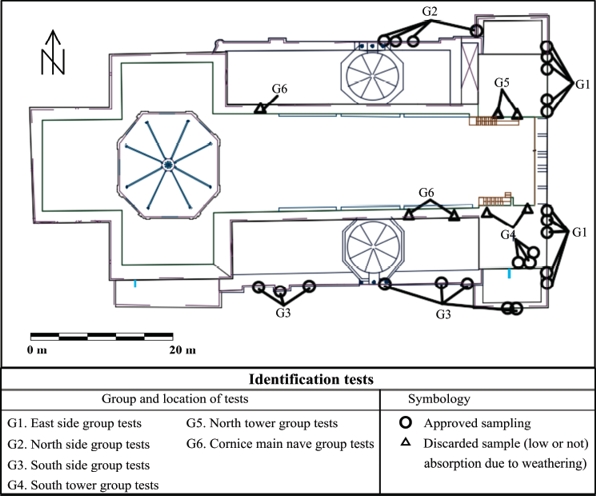
Figure 4 X-ray-diffractogram of the original buildings stone (sample S01) compared with the replacement stones (S02 and S03).
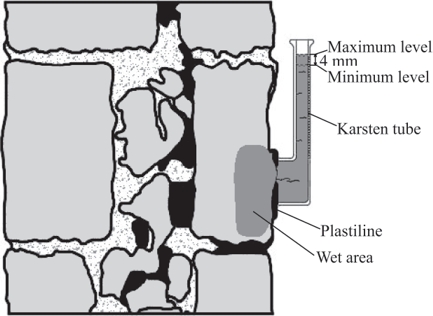
Figure 5 Cathedral plan view showing the location of the absorption tests carried out on the Cathedral. G1: tests at the east on the main façade including essays 1 to 20; G2: tests on the north lower walls including essays 21 to 28; G3: tests on the south lower walls including essays 29 to 39; G4: test on the south tower including essays 39 to 43; G5: tests on the north tower including essays 43 to 45; and G6: tests on the upper wall including essays 45 to 48.
Lab testing
Due to the inability to get lab stone samples from the studied historical building, tests were limited to specific stone types that were removed from the building during a restoration campaign. Non-weathered samples were extracted from these removed stones, discarding the weathered parts of the stone in order to guarantee the obtaining of fresh-stone samples for lab tests.
To identify and determine the crystalline phases of collected samples XRD-analyses were performed on each of the three main used stones (powder of S01, S02 and S03).
All lab tests were carried out on cubic samples (6.5 cm x 6.5 cm x 6.5 cm, DIN standard) which were examined to identify and labeling their sides according to the shape and size of their exposed fabric (Table 2). The hydraulic characterization tests were applied on the three surfaces formed by the X, Y and Z-axis of each cubic sample in order to detect hydraulic anisotropy of the rock.
We applied the same methodology that in situ tests (Karsten tube) to determine the absortion capacity in lab conditions on three stones (S01, S04 and S05). In adition, water uptake testings were carried out on four samples (S01, S03, S04 and S05) according to DIN ISO 15148 (DIN 2002).
Furthermore, matrix density (ρmatrix), apparent density (ρBulk) and sample porosity were determined through the hydrostatic weight test, according to DIN EN 772-11 specification on four stone samples (S02, S03, S04 and S05). S01 and S06 sample were not available for this test. Additionally, three stone samples (S01, S02 and S03) were tested with the mercury intrusion testing DIN 66133 (DIN, 1993) in order to determine the pore size and the porosity distribution. Finally, 4 stone cubic samples (S01, S03, S04 and S05) were tested with salt crystallization method DIN EN 12370 (DIN, 1999) in order to characterize the rock degradation rate. Table 3 summarizes the test carried out on stone samples, pointing out the type of tested stone and the number of tested samples. It was not possible to test the six types of rocks under all tests because of the difficulty of obtaining sufficient number of samples for each of the tests.
Results
In situ water absorption capacity
Twenty-six in situ tests resulted reliable data. Measurements carried out on the first meter high off the wall reported values of absorption extremely low, even several absorption null values were measured. After these anomalous initial results, a visual inspection on the spots where these tests were implemented shown that the stones have an impermeable surface covering. The formation of a dirtiness layer created on the stone surface by atmospheric pollution or growth of biological agents that induces stone degradation has been reported by several authors (Bonazza et al., 2007; Brimblecombe, 2000; Zappia et al., 1998; Turkington et al., 1997; Amoroso and Fassina., 1983).
The impermeable covering caused that results of the Karsten tube tests were lower absorption values than those ones that were measured on stones which do not present it. This impermeable surface layer developed only on the stones from the lower parts of the walls. It was generated due to anthropogenic dirtiness (greasy, dust and moisture) which was accumulated and impregnated over time on the stones in the wall, leading to the obstruction of the continuity of the stone porosity in a surface layer, and consequently leading to a decreasing in the stone permeability.
Other factor, which could be contributing to the formation of the impermeable covering, is the rising moisture. This moist could be causing salt crystallization and consequently an obstruction of the stone pores.
After this observation, tests were implemented on the stones above two meters high, where stones are free of this dirtiness.
The graphs of absorption vs. time for the 26 tested spots on the cathedral are shown in Figure 6. These plots show data for samples S02, S04, S05 and S06 only, which were the tested stones free of the impermeable covering (dirtiness). From the tested stones, the one with the high absorption rate is S05. Tests on stones S01 and S03 produced non-representative values of the absorption of the stone (values close to zero), due to the presence of the impermeable surface layer. Hence these graphs were excluded from Figure 6.

Figure 6 Absorption test carried out on the stones of the masonry walls of the Cathedral of Aguascalientes City. The field procedure for the test included: a) colocation of the Karsten tube on the rock surface, b) filling the pipette with distillated water, c) measuring the water level at 1, 2, 3, 4, 5, 10, 15, 20 and 30 minutes.
Lab testing
XRD analyses show that all the used stones produce very similar diffractograms (Figure 7). All of them are very rich on quartz, which is characteristic for acid volcanic rocks. The proximity between the quarries where the original building rock (Barranca tuff) and the replacement one (Valladolid tuff) were extracted suggests that both came from the same formation, located few kilometers at the west of Aguascalientes City.
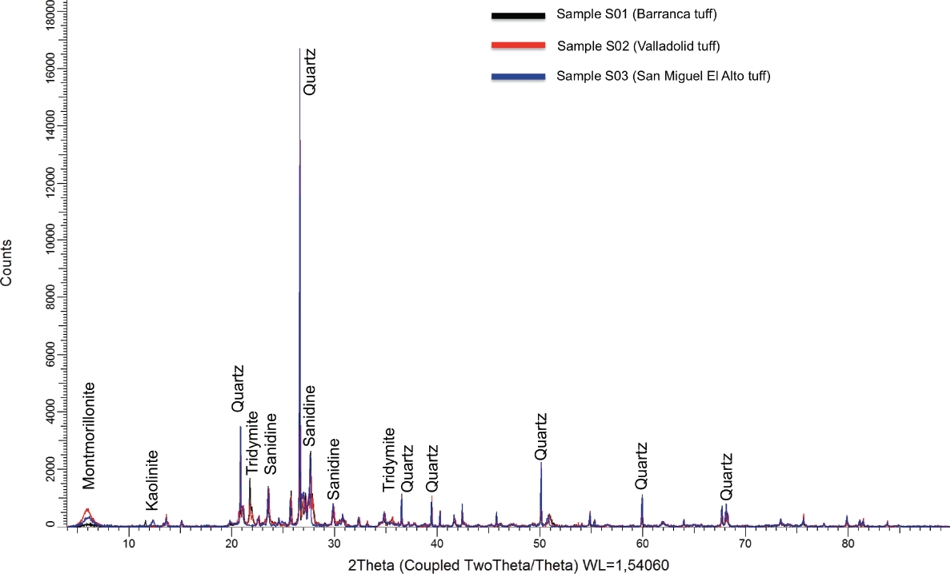
Figure 7 In situ water absorption capacity test for samples S02, S04, S05 and S06. kmin, kmax and kL (ml/min) are the minimum, maximum and average absorption coefficients respectively, determined in situ.
Figure 8 shows the graphs of the 3 stones (S01, S04 and S05) tested with the Karsten tube to determine the absorption rate or water penetration rate. The graphs shows that the stone having the highest absorption rate is the one S05 and that stones show hydraulic anisotropy. This is showed by the fact that in all graphs, X side is the one with the highest rate of absorption, while the lowest rates of absorption correspond to the Z side.
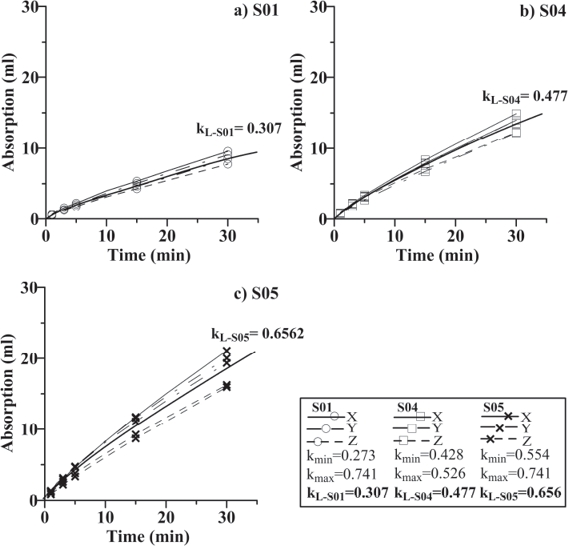
Figure 8 Water absorption capacity in laboratory test for samples S01, S04 and S05. kmin, kmax and kL (ml/min) are the minimum, maximum and average absorption coefficients respectively, determined in lab.
Figure 9 shows the graphs of the tested samples with the water uptake test (S01, S03, S04 and S05) according to DIN ISO 15148 (DIN, 2002). The Graphs shows that stone S05 is the one that has the highest capacity to uptake water by capillary, which is consistent with results of absorption tests both in situ and in lab (Figures 6 and 8).
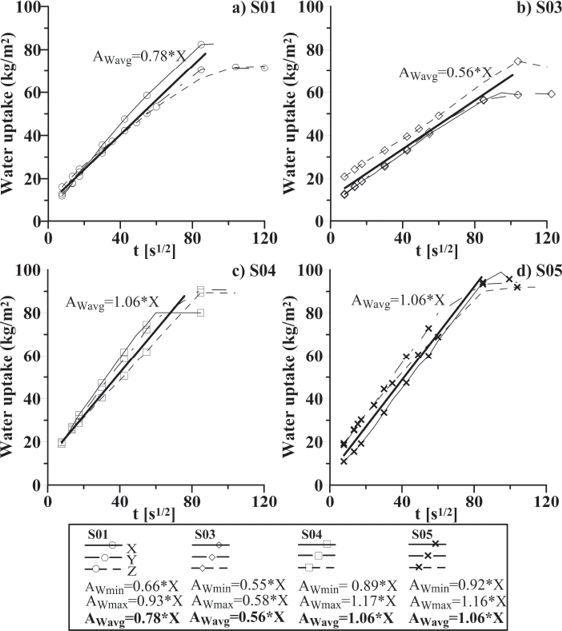
Figure 9 Water uptake by capillary obtained in the four samples: (a) S01, (b) S03, (c) S04 and (d) S05. AWmin, AWmax and AWavg are the minimum, maximum and average water uptake coefficientes respectively, determined in lab. The thick line is the average trend line in each sample.
Table 4 shows the results of the hydrostatic weight test performed in stones S02, S03, S04 and S05, and Figure 10 shows the pore radii distribution of the original and the remplaced stones S01, S02 and S03. The pore radii distribution shows clearly, that the original building rock content almost exclusively macropores, while the replacement rock (S02) has mainly micropores. The last used restorations rock (S03) has a very similar distribution as the original rock.
Results show even though stone S05 has the highest value of capillary water uptake capacity (Table 4), and it is the one with the highest rate of water absorption (see Figures 6, 8 and 9), stone S04 is the one having the highest porosity.
Figure 11 shows the results of the salt crystallization test (salt bursting test) for the stones S01, S03, S04 and S05. Graphs show 4 well defined stages along the degradation curve of sample which are discussed in the result discussion section.
Discussion
With the help of the XRD analyses it was possible to determine that the sample S01 (Barranca tuff, Figure 7), presents a high content on tridymite, which suggests that it had a higher temperature than the other replacement stones (S02 and S03, Figure 7). The cooling of this rock apparently occurred very fast, what was observed under the polarized light as a glassy (unwelded) texture. XRD analyses also showed that sample S02 (Valladolid tuff) presents high content on montmorillonite (bentonite) and sample S03 (from San Miguel El Alto) has kaolinite but lacks of trydimite (Figure 7).
Karsten tube and water uptake tests
Absorption data from in situ tests using the Karsten tube is a measure of the rate of penetration of water into the stone, while data from the water uptake test characterize the capacity of the stones to uptake water by capillary. High values of these two parameters are related to potentially greater contents of water into the stones, and consequently they are related to a high potential for salt crystallization. Thence both parameters can be used as an indicator of the propensity of a stone to be affected by salt crystallization, which is the main damage observed in the masonry stones of the Cathedral of Aguascalientes City.
Accordingly, results from Karsten tube and water uptake tests show that stone S05 (Valladolid tuff) has a higher propensity to salts crystallization. This is consistent with the level of damage observed on the stones of the masonry from the studied building walls. Rock S06 has the lowest absorption rate in the Karsten tube test. Therefore, this rock has the lowest propensity to crystallize.
Even though the field test results present a high dispersion, they are consistent with the lab results. Furthermore, the anomalous results observed in the field tests performed on the lower parts of walls (low or even null absorption values), were related to a dirtiness cover-film caused by anthropogenic activities. This dirtiness-film favors the salt crystallization, due that absorbed water from the subsoil cannot be dried through the exposed surface of building walls. Thence, the in situ test results giving abnormally low values, could be used as an indicator of the wall height in which rising moist could be favoring and acting as an accelerant of weathering by salt crystallization.
The greatest number of tests dealing with abnormally low results was performed on the wall at the northern building side, which is on a street with high transit of cars and people. This suggests that this wall could be the most internally deteriorated due to salt crystallization, and it proves that the combination of transit of vehicles and people walking close to an historical building is an accelerator of the masonry deterioration.
On the other hand, the low values from both rate of absorption (k) and water uptake coefficients (Aw), are associated with stones less prone to be deteriorated because their low capacity and rate to absorb water. Therefore, the lab results show that stones S01 and S03 have a better performance against capillary water uptake. It is very important to note that samples S01 and S03 have practically only macropores (Figure 10), and may promote the water circulation into the rock, but we have seen that both samples consist of a glassy matrix (glassy texture) with a very complicated network of pores wich gives a non-effective porosity.
Hence, these types of stones could be the most suitable ones to be used in future restorations as substitution material.
Even though the absorption lab test shows that the stones have hydraulic anisotropy, if it is considered that variations of absorption for the different sides of a stone sample are in the same magnitude order (Figure 8), and then anisotropy is not significant for all tested stones.
Porosity and pore size distribution
According to several authors (e.g.Siegesmund and Dürrast, 2014; Ruedrich et al., 2005, 2010; Viles et al., 1997; Poschlod, 1990; Fitzner and Snethlage, 1983; Fitzner, 1970; Hirschwald, 1908) porosity has a key role in the analysis of stone weathering due that porosity has a direct relationship to other stone physical properties. Lucia (1999, 1995, 1983) found that high porosity is considered a negative factor for the stone behavior as construction material, and it is related to lower compressional resistance and a high susceptibility to be weathered.
Even though the results of the hydrostatic weight test indicate that stone S04 (from Valladolid) is the one with the highest effective porosity, determinations in lab show this one presents values of absorption rate and water uptake coefficient very close to those of stone S05 (Figure 8 and 9). Hence, these results suggest that stone S04 is also a stone prone to uptake water by capillary and consequently also more prone to be deteriorated by salt crystallization as the stone S05. In addition, results of hydrostatic weight show that stone S03 has a less porosity (Table 3), which is consistent with the results of the water uptake and absorption rate tests.
High values of absorption are usual in tuff stones due to low compaction during the process of pyroclastic deposition, and they are related to low bulk density values and high effective porosity (Mosch, 2009; Mosch and Siegesmund, 2007). Furthermore, the mechanism of capillary water uptake is a function of the pore size and its interconnections (effective porosity). The absorption due to capillary takes place mainly in materials having pores from 10 to 100 µm (capillary pores, see Siegesmund and Dürrast, 2014).
Porosity can be classified according the pore size (Siegesmund and Dürrast, 2014): microporosity (pores smaller than 0.1 µm); capillary pore (pore size from 1 µm to 1 mm), and macroporosity (pores larger than 1 mm). Results showed that stones S01 and S03 have capillary pore, while stone S02 presented almost only microporosity (Figure 10).
Salt crystallization
Damage due to salt growing on porous stones of heritage building is a major concern for restoration studies (Flatt et al., 2014 ; Tsui et al., 2003; Goudie and Viles, 1997).
The results of the salt crystallization tests show that all samples presented four stages (Figure 11). Stage 1 is an increment of weight due to the salt formation (crystallization) into the primary pore network, while stage 2 presents a decrease in weight caused by the lost of fragments and part separation of the sample (salt bursting), due to cohesion lost caused by the pore pressure. Stage 2 is accompanied by a clear increase in the color of the samples becoming clearly darker. A stage 3 can be observed. It is like a recovery one in the curve corresponding to an increase of the weight, likewise caused by salt crystallization but this time due to an increase of salt crystallization in the primary and secondary porosity. After phase 3, the samples show another change in the coloration, becoming more and more reddish (Figure 11). After this recovery stage, the graph shows that sample weight drops down reaching its total disintegration (stage 4).
A Similar behavior was reported by Flatt et al. (2014) for Portland limestone. Angeli et al. (2007) tested sandstones and limestones and, their results show a continuous decaying of the weight measured each cycle, and they do not report an increasing stage as the one observed in the tested samples in this work. However the total of salt bursting cycles realized with the studied samples before their total decay corresponds perfectly with the behavior of other analyzed volcanic tuff rocks (López-Doncel et al., 2016).
All of tested stones in this work disintegrate approximately at the 16th cycle of the tests (Figure 11). This means that in spite of their differences shown of the other determined parameters (absorption rate, water uptake capacity, and porosity), the tested stones have similar resistance to be deteriorated by salt crystallization.
Conclusions
Both the original rock and the rocks used in the different restoration works are acidic volcanic rocks (rhyolite-ignimbrites), of very similar ages and according the XRD-analysis also a very similar mineralogical composition. Barranca tuff contains more tridymite which indicates a higher temperature during its formation.
The observed rising moisture affecting the cathedral walls can be explained with the characterization results of the stones in the walls: Six stone types were identified as constitutive material of the walls. All of them were classified as high porosity tuffs having porosity indexes from 28 to 37%, and having water uptake coefficients between 0.56 to 1.06 kg/m2s½ for samples free of deterioration.
Among the six identified stones, the ones named as S04 and S05 presented the higher value of both water uptake coefficient and absorption capacity. Therefore, these stones are the most susceptible to get moisture from subsoil in a faster way and in higher amounts. Besides, these stones have the highest values of porosity in this study. Thus, stone S04 and S05 are the ones most prone to deteriorate, which was confirmed trough the damages identification survey that shown that flaking, scaling and black crusts were more recurrent in stone S04.
Salt crystallization test shown that all stones have the same resistance to be deteriorated by this effect (approx. 15-17 cycles) and this is totally dependent on the high porosity values of all studied samples (all of them > 25% porosity). Nevertheless, stones present different deterioration rates, being the stones S03 and S04 the ones that are more quickly deteriorated, and the stone S01 the one that has the lowest rate of deterioration. Therefore, the original stone S01 is the most appropriated one to be used in future restorations.
Results show that the height of the stone position on the wall, and the location of walls in the context of the urban environment more than its petrophysical properties, are the determining factors in the level of vulnerability to deterioration that each stone has. Stones located in the lower part of walls, close to the terrain surface, are more prone to deteriorate due that the raising moisture effect accelerates the damage process. The northern wall of the cathedral located on a busy street has the most accelerated deterioration rate of the whole cathedral due to the combined effects of both rising moisture and anthropic pollution caused by the transit of vehicles and pedestrians.
Furthermore of the above conclusions, wich are usefull information for the preservation works of the Cathedral of Aguascalientes City, the applied methodology could be used to determine the vulnerability to deteriorate of stones forming part of buildings, monuments and sculptures located anywhere abroad. An important result obtained in the realized salt bursting test is the marked change in the coloration of the studied rocks (Figure 11). It is clearly recognized that regardless of the original color of the rocks, all the samples acquire a darker coloration during the second phase of the experiment, acquiring in this phase its darkest tone and almost continuously continues with a change in reddish tones in the phases prior to total decay. This information will serve as an effective tool to recognize the level of deterioration caused by salt crystallization in tuffs of historical buildings.











 nova página do texto(beta)
nova página do texto(beta)

